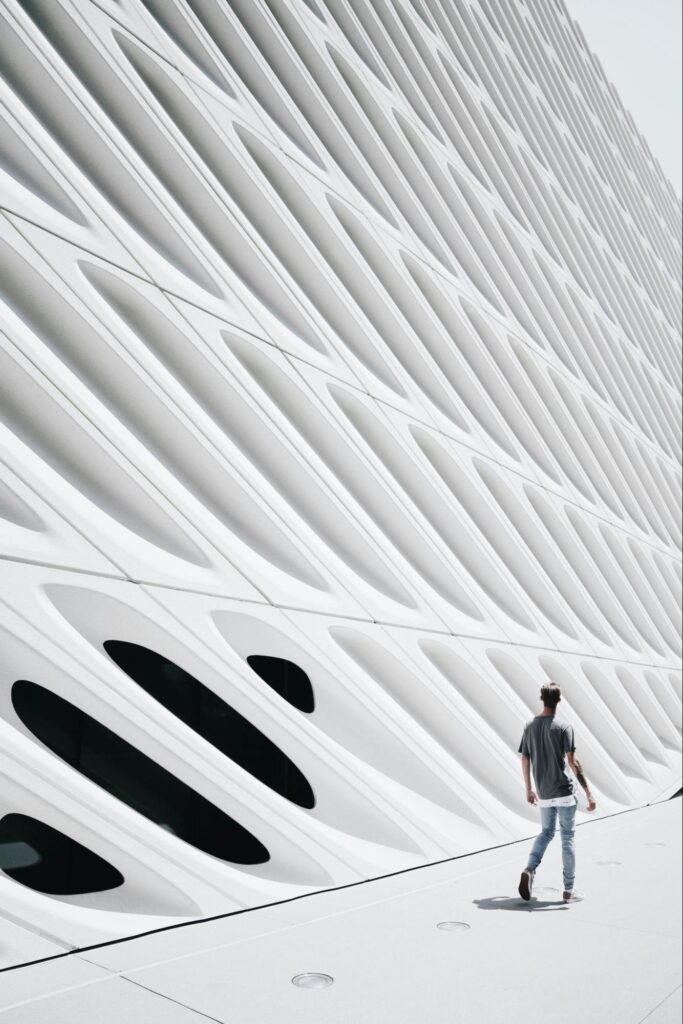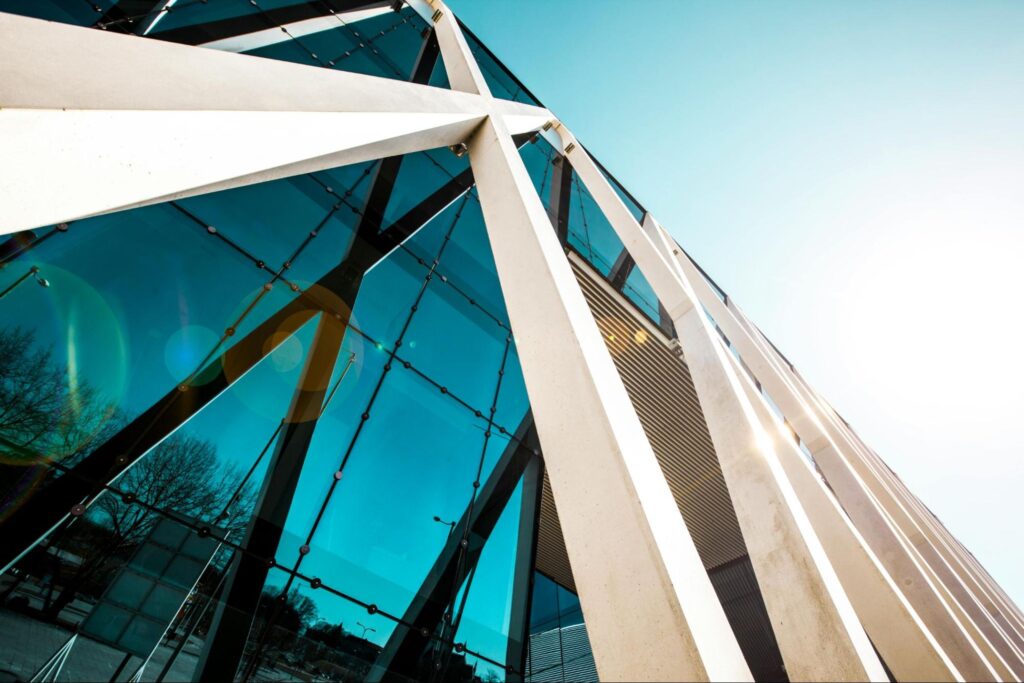Window film is not only functional, but it also can enhance the aesthetic appeal of a building’s exterior. The appearance of window film plays a crucial role in determining its overall impact on the design and style of a structure. Understanding the basics of window film and its various types is essential for making an informed choice that complements architectural aesthetics.
Understanding the Basics of Window Film
Window film, also known as window tint, is a thin laminate film that is applied to the interior or exterior side of glass surfaces. Its primary function is to reduce the amount of heat and glare that enters a building while still allowing natural light to pass through. Additionally, window film also provides privacy and blocks harmful UV rays, which can fade interior furnishings and increase the risk of skin cancer.
Different Types of Window Film
There are various types of window films available, each with its unique characteristics and benefits. The most common types include:
- Solar Control Window Film: This type of film is designed to reduce heat and glare from the sun, making interiors more comfortable and energy-efficient. It can significantly lower energy costs by reducing the need for excessive air conditioning.
- Privacy Window Film: As the name suggests, privacy film blocks the view from the outside, providing confidentiality and security without compromising natural light. It is an excellent choice for offices, conference rooms, and residential spaces where privacy is a priority.
- Decorative Window Film: Decorative film offers versatile design options, allowing you to create custom patterns, and textures, or even mimic the appearance of stained glass. It can add a touch of elegance and uniqueness to any space, making it a popular choice for commercial buildings, retail stores, and even residential homes.
The Role of Window Film in Exterior Design
Window film is not only functional but can also contribute to the overall aesthetic appeal of a building’s exterior. It can seamlessly blend with the architectural style, enhancing the visual appeal and creating a cohesive look. The choice of window film can be influenced by various factors, such as the building’s design, location, and the desired level of privacy and energy efficiency.
When selecting window film for exterior design, it is essential to consider the building’s surroundings. For example, in urban areas with high foot traffic, privacy film can be used to shield the interior from prying eyes while still allowing natural light to illuminate the space. On the other hand, in commercial buildings with large windows, solar control film can help regulate the temperature and reduce glare, creating a more comfortable environment for employees and customers.
Furthermore, the color and shade of the window film can also play a role in exterior design. Darker films can add a sleek and modern touch to a building, while lighter films can create a more subtle and understated look. The choice of film can be tailored to match the architectural style and overall aesthetic of the building, ensuring a harmonious and visually appealing exterior.
The Aesthetic Impact of Window Film
Window film can significantly enhance the architectural style of a building, transforming its appearance in a meaningful way. Here are some ways in which window film can have an aesthetic impact:
Enhancing Architectural Style with Window Film
Window film allows for creative expression and can enhance the architectural style of a building. It can be used to emphasize specific design elements, such as window frames or arches, by providing contrast or complementing the existing materials. By choosing the right color and texture, window film can enhance the overall visual appeal of the structure and create a harmonious look.
Color and Texture Choices in Window Film
The color and texture of window film play a crucial role in determining its aesthetic impact. Transparent or lightly tinted window films can provide a sophisticated and modern look, allowing uninterrupted views of the surroundings. On the other hand, frosted or textured films can add a touch of elegance and privacy, while still allowing plenty of natural light to pass through.
Moreover, window film can also contribute to the energy efficiency of a building. Certain types of window film are designed to reduce heat gain in the summer and heat loss in the winter, helping to maintain a comfortable indoor temperature and potentially lowering energy costs. By choosing energy-efficient window film, not only can you enhance the aesthetic appeal of your building, but you can also make it more environmentally friendly.
Custom Designs and Patterns
Another way in which window film can have a significant aesthetic impact is through custom designs and patterns. Whether it’s geometric shapes, intricate motifs, or even company logos, custom window film can add a unique and personalized touch to a building’s facade. These bespoke designs can serve as focal points, drawing attention to specific areas of the building and creating a memorable visual impact.
The Science Behind Window Film Aesthetics
The aesthetics of window film are not purely subjective but are influenced by scientific principles, such as light reflection, transparency, and translucency. Understanding these scientific aspects can help in selecting the right window film for achieving the desired aesthetic outcome.
When delving into the world of window film aesthetics, it’s essential to consider the impact of color. Different colors of window film can alter the mood and ambiance of a space. For example, cool-toned films like blues and greens can create a calming and serene atmosphere, while warm-toned films like reds and yellows can add a sense of energy and warmth to a room.
Light Reflection and Window Film
Window film can affect the way light is reflected, absorbed, or transmitted. The degree of light reflection depends on the properties of the film, such as its thickness, composition, and surface characteristics. By selecting a film with the desired light reflection properties, one can create a specific ambiance and enhance the visual appeal of a building’s exterior.
In addition to light reflection, the angle at which light hits the window film can also play a significant role in its aesthetic impact. Different films may interact with light in unique ways, creating mesmerizing patterns or enhancing specific design elements depending on the angle of view.
The Role of Transparency and Translucency
Transparency and translucency are crucial factors to consider when choosing window film for aesthetic purposes. Transparent films allow for clear views and maintain the original appearance of the glass, making them ideal for buildings with picturesque surroundings. Translucent films, on the other hand, provide privacy while still allowing natural light to filter through, adding a touch of mystery and elegance to the building’s exterior.
Moreover, the texture of window film can also contribute to its aesthetic appeal. Textured films can create visual interest by diffusing light in unique ways, adding depth and dimension to a space. Whether opting for a smooth, glossy finish or a textured, matte surface, the tactile quality of window film can enhance the overall aesthetic experience.
Selecting the Right Window Film for Your Aesthetic
Choosing the right window film for your aesthetic requirements involves considering various factors, from the type of property to the specific design goals. Let’s explore the key considerations for residential and commercial properties.
Considerations for Residential Properties
Residential properties often require a balance between aesthetics, privacy, and energy efficiency. For homeowners, selecting a window film that complements the architectural style and enhances the curb appeal is essential. Privacy films that offer a range of opacity options can be ideal for bedrooms and bathrooms, while solar control films can help regulate indoor temperature and reduce energy consumption throughout the home.
Moreover, for homeowners looking to add a touch of creativity to their living spaces, decorative window films are a popular choice. These films come in a variety of patterns and designs, allowing homeowners to express their style while still benefiting from increased privacy and UV protection.
Commercial Property Window Film Selection
Commercial properties have their own unique set of requirements when it comes to window film aesthetics. The choice of film should align with the brand image and the overall design of the building. For retail spaces, decorative films can be used to create eye-catching storefronts or highlight specific merchandise. In office environments, films that provide glare control and privacy without compromising natural light are often preferred.
Furthermore, in healthcare facilities, safety and security window films are crucial to protect patients and staff from potential hazards. These films are designed to hold shattered glass in place in the event of breakage, reducing the risk of injuries from flying shards. Additionally, anti-graffiti films are beneficial for public buildings, as they provide a protective layer that can be easily replaced if vandalized, saving time and maintenance costs.
Installation and Maintenance of Window Film
Proper installation and maintenance are crucial for ensuring that window film maintains its aesthetic appeal and functionality over time. Here are some considerations to keep in mind:
Window film is a versatile and cost-effective solution for enhancing privacy, reducing glare, and improving energy efficiency in both residential and commercial settings. When considering the installation of window film, it is essential to assess the specific needs of the space, such as the level of sun exposure, desired level of privacy, and aesthetic preferences. This evaluation will help determine the type of window film that best suits the requirements of the environment.
Professional vs. DIY Installation
While some window films can be installed as a DIY project, it is often recommended to hire a professional for optimal results. Professionals have the expertise and the necessary tools to ensure a flawless installation, minimizing the risk of bubbles, wrinkles, or premature peeling. Additionally, professional installation often comes with a warranty, providing peace of mind and long-term protection.
Professional installers follow industry best practices to ensure that the window film is applied smoothly and without imperfections. They have the skills to handle challenging installations, such as large or uniquely shaped windows, with precision and efficiency. By entrusting the installation to professionals, property owners can be confident in the quality and longevity of the window film.
Keeping Your Window Film Looking Its Best
Regular maintenance is key to preserving the aesthetics of window film. Cleaning the film with a soft cloth and mild soap can help remove any dirt or smudges without damaging the film. It is important to avoid using abrasive materials or harsh chemicals that can scratch or fade the film’s surface. Following manufacturer guidelines and avoiding excessive heat or moisture can help prolong the life and appearance of window film.
Furthermore, periodic inspections of the window film can help identify any signs of wear or damage early on. Addressing issues promptly, such as small tears or peeling edges, can prevent further deterioration and extend the lifespan of the film. By incorporating regular maintenance into a property care routine, individuals can enjoy the benefits of window film for years to come.
Conclusion
Window film not only offers functional benefits but also plays a vital role in enhancing the aesthetic appeal of a building’s exterior. Understanding the basics of window film, its types, and the science behind its aesthetics is crucial for making an informed choice that suits the design goals and requirements of both residential and commercial properties. By selecting the right window film and ensuring proper installation and maintenance, one can elevate the visual impact and create a lasting impression on the building’s exterior.


